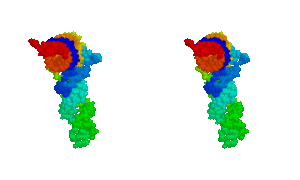Well, time for me to make an appearance on the blog. Now that Barry has added authorship, my delinquence has become obvious. Just wanted to flag a New York Times article about bringing back Mammoths. One of my favorite synthetic biologists – George Church has some interesting comments in the article. On a side note, I recommend catching one of George’s talks if you have a chance – be sure to look out for the spinning tRNA (if you don’t see it at some point in the talk, you might be watching an imposter):

The approach George recommends is starting with the genome of a close relative of the Mammoth such as the African Elephant and then making the necessary changes to convert the elephant genome to match the recently sequenced Mammoth genome. The elephant/mammoth egg could then (possibly) be brought to term by an African Elephant. Development is a pretty robust process, so maybe it would work.
He also describes a new technology out of his lab that might be able to automate the large number of genome changes needed to pull off such a feat. I suspect he’s talking in part about the good work described in this patent application by one of his graduate students (and another of my favorite synthetic biologists) Harris Wang.
George also mentions that making zoos better isn’t as high on his list as addressing major world problems like the energy crisis. I agree with that, though I have to say that de-extincting species isn’t too far down there.




